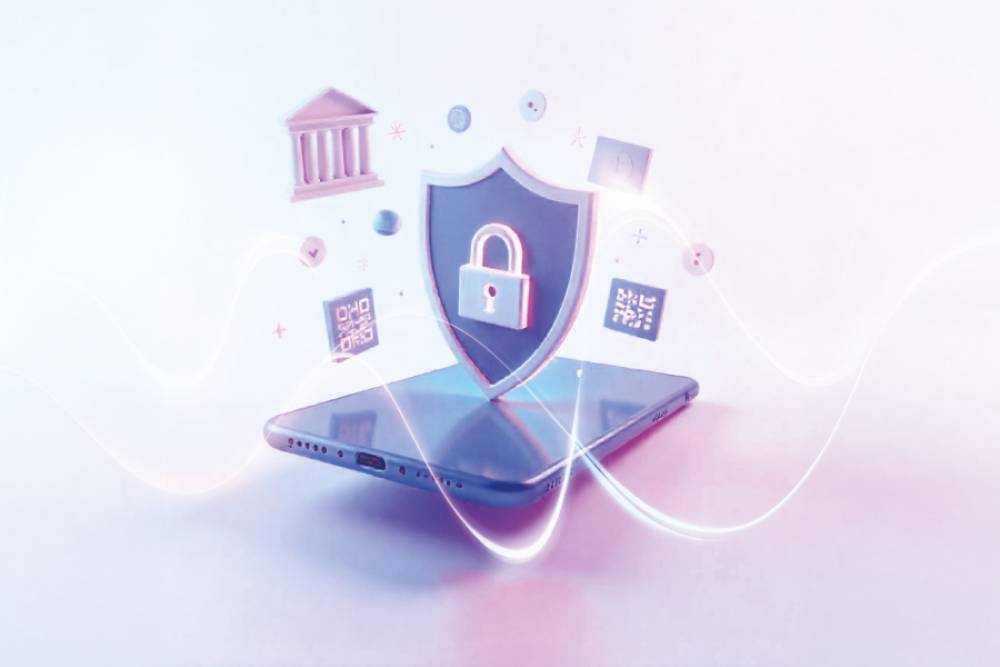ID fraud in banking: how biometric security stops modern attacks Written on

TL;DR
- Identity fraud cost U.S. businesses $56 billion in 2020, with banks as primary targets
- Bank scam volume and value increased by 61% and 59% respectively in recent years
- Face biometric authentication can reduce fraud by up to 90% while improving customer experience
- Implementation ROI for biometric security systems typically achieved within 12-18 months
- Regulatory compliance requirements make robust authentication mandatory, not optional
Bank scams have been reported to be increasing both in volume and value (61% and 59% respectively). This global trend is directly attributed to digital banking's explosive growth. In our increasingly connected world, more financial transactions take place online than ever before, giving fraudsters a richer dataset to exploit as they continuously find creative ways to impersonate bank customers and steal substantial amounts of money.
The financial services industry faces an unprecedented challenge: protecting customers and institutional assets while maintaining the seamless digital experience consumers demand. Traditional security methods are proving inadequate against sophisticated fraud schemes, making advanced authentication solutions not just beneficial, but essential for survival.
In this comprehensive guide, we'll explore the true cost of identity fraud for banks and fintechs — and reveal how modern financial institutions can effectively prevent these attacks while enhancing customer satisfaction.
The rising cost of bank identity fraud
Identity theft statistics that matter
Identity fraud represents a growing crisis for banks and fintechs, with devastating impacts on their bottom line and customer trust. According to research by Javelin Strategy & Research, identity fraud cost U.S. businesses a staggering $56 billion in 2020 alone. Financial institutions bear the brunt of this burden, as they remain the primary targets of fraudsters seeking to steal money or sensitive customer data.
The digital transformation of banking has inadvertently created new vulnerabilities:
- 47% of consumers worldwide have fallen victim to online identity theft
- $5.85 million average cost of a single phishing attack on financial institutions
- 300% increase in account takeover attempts since 2019
- 15 seconds average time for fraudsters to monetize stolen banking credentials
With the increasing popularity of online shopping and digital banking onboarding processes, consumers share more personal and financial information online than ever before. The widespread use of mobile devices and public Wi-Fi networks compounds these risks, making it easier for cybercriminals to intercept and steal sensitive data.
Financial impact on banks and fintechs
Using stolen information, fraudsters gain unauthorized access to customer accounts and exploit them for financial gain. Common fraud tactics include:
- Opening unauthorized credit accounts
- Making fraudulent purchases and transfers
- Taking out loans using stolen identities
- Conducting money laundering operations
- Selling personal data on dark web markets
In most cases, victims remain unaware that their identity has been compromised until they receive bills for charges they never made, often weeks or months after the initial breach.
Why traditional security methods are failing
The costs of identity fraud for banks and fintechs extend far beyond immediate financial losses. These impacts can be categorized into three critical areas that threaten long-term institutional viability:
1. Direct financial losses
Financial losses represent the most immediate and measurable cost of identity fraud. Beyond the average $5.85 million cost per phishing attack, institutions face:
- Fraudulent transaction costs: Direct monetary losses from unauthorized transactions
- Chargeback fees: Costs associated with disputed transactions
- Investigation expenses: Resources allocated to fraud detection and resolution
- System downtime: Lost revenue during security incident response
- Enhanced security investments: Emergency upgrades to prevent future attacks
2. Reputational damage and customer churn
Consumer awareness of identity theft risks continues growing, making reputation protection critical for financial institutions. A single high-profile fraud incident can:
- Damage brand trust and consumer confidence
- Lead to significant customer attrition
- Decrease new account acquisition rates
- Increase marketing costs for reputation recovery
- Reduce competitive positioning in the marketplace
Studies show that 68% of consumers would switch banks after experiencing identity fraud, with 92% likely to share negative experiences with others.
3. Regulatory fines and compliance costs
Financial institutions operate within complex regulatory frameworks designed to protect consumers and prevent fraud. Non-compliance can result in severe penalties:
- GDPR fines: Up to 4% of global revenue for European data protection violations
- PCI DSS penalties: Substantial fines for payment card data breaches
- SOX compliance costs: Increased audit and reporting requirements
- FFIEC regulations: Enhanced cybersecurity framework compliance
- State-level penalties: Additional fines from local regulatory bodies
Face biometrics: The future of bank security
Banks and fintechs are implementing comprehensive fraud prevention strategies that go far beyond traditional security measures. These include customer and employee awareness programs, advanced transaction monitoring, and most importantly, revolutionary authentication methods.
How face authentication works
Face biometrics has emerged as one of the most effective solutions for preventing identity theft in the financial industry. Unlike traditional authentication methods such as passwords, PINs, or security questions, face biometrics provides a unique and virtually impossible-to-replicate method of identity verification.
Key advantages of biometric authentication include:
- Uniqueness: Every person's facial features are distinct and cannot be easily replicated
- Convenience: No need to remember complex passwords or carry physical tokens
- Speed: Authentication completed in under 2 seconds
- Accuracy: Less than 0.01% false acceptance rate with modern systems
- Liveness detection: Advanced systems detect and prevent spoofing attempts
Benefits beyond security
The implementation of face authentication in digital banking transactions offers numerous advantages that extend beyond fraud prevention:
Enhanced customer experience:
- Eliminates password fatigue and forgotten credential issues
- Reduces authentication time from 30+ seconds to under 2 seconds
- Provides seamless cross-device and cross-channel experiences
- Improves accessibility for customers with physical limitations
Operational efficiency:
- Reduces customer service calls related to account access issues
- Decreases manual verification processes
- Streamlines account recovery procedures
- Enables 24/7 automated authentication
Versatility and scalability: Face authentication technology can secure a wide range of banking activities:
- ATM transactions and cash withdrawals
- Online and mobile banking access
- Wire transfers and large payments
- Account opening and KYC processes
- Customer service authentication
- Branch-based transactions
Implementation strategy for financial institutions
Regulatory compliance considerations
Modern biometric systems are designed with privacy and regulatory compliance at their core:
- GDPR compliance: Biometric data encryption and user consent protocols
- CCPA adherence: California privacy protection requirements
- BIPA compliance: Illinois biometric privacy protections
- PCI DSS standards: Payment card industry security requirements
- ISO 27001 certification: International security management standards
ROI and cost-benefit analysis
Financial institutions typically see positive ROI from biometric authentication systems within 12-18 months:
Cost savings:
- 75% reduction in fraud-related losses
- 60% decrease in customer service authentication costs
- 40% reduction in account recovery expenses
- 85% improvement in compliance audit efficiency
Revenue enhancement:
- 25% increase in digital channel adoption
- 30% improvement in customer satisfaction scores
- 15% higher customer retention rates
- 20% faster new account onboarding
Frequently asked questions
How much does identity fraud cost the average bank?
According to industry research, identity fraud costs banks an average of $5.85 million per successful attack, with smaller institutions typically losing $1.2-2.8 million annually to various fraud schemes.
What's the implementation timeline for biometric systems?
Most financial institutions can implement face biometric authentication within 3-6 months, including integration testing, staff training, and regulatory compliance validation.
Are biometric systems GDPR compliant?
Yes, modern biometric systems are designed with GDPR compliance built-in, including encrypted data storage, user consent management, and data portability features.
How do customers react to face authentication?
Studies show 78% of banking customers prefer biometric authentication over traditional methods, citing convenience and security as primary benefits.
Can face authentication work with masks or glasses?
Advanced biometric systems can authenticate users wearing masks or glasses by analyzing visible facial features and adapting to partial face coverage.
The path forward: Securing digital banking's future
Identity fraud represents a significant and growing threat to banks and fintechs, with financial losses, reputational damage, and regulatory fines all contributing to substantial business impact. As fraud tactics become increasingly sophisticated, financial institutions must stay ahead of the curve by implementing robust security measures that protect both institutional assets and customer trust.
Face biometric authentication offers a powerful combination of security and convenience that addresses the core challenges facing modern banking. With its unique ability to provide virtually unbreakable identity verification while enhancing customer experience, this technology is positioned to become the foundation of secure digital banking.
The question is no longer whether to implement advanced authentication methods, but how quickly institutions can deploy these solutions to protect their customers and their business. Those who act decisively will gain competitive advantages in security, customer satisfaction, and operational efficiency.
Protect your users and your business with YouLive, our Liveness and Deepfake Detection solution. Know more about it here.






